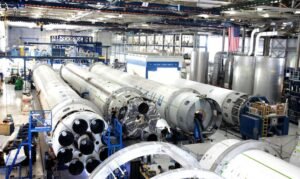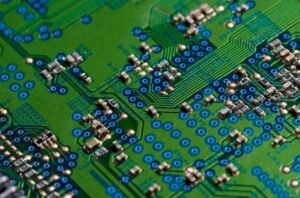Neural Networks for Machine Learning
The field of artificial neural networks has made significant advancements in recent years, revolutionizing machine learning and pattern recognition. Neural networks are computational models inspired by the structure and functionality of the human brain, consisting of interconnected nodes called neurons. These networks are capable of learning and generalizing complex patterns from large datasets, making them highly effective tools in various fields, such as computer vision, natural language processing, and data analysis. This article provides an overview of neural networks, their applications, and how they function.
Key Takeaways:
- Neural networks are computational models inspired by the human brain.
- They are capable of learning and generalizing complex patterns.
- Neural networks have various applications, including computer vision and natural language processing.
- They consist of interconnected nodes called neurons.
- Neural networks operate through a process known as forward propagation.
Neural Network Architecture
Neural networks consist of several interconnected layers of neurons, organized into an input layer, one or more hidden layers, and an output layer. Each neuron in the network receives inputs, performs a computation, and produces an output. The inputs and outputs are multiplied by weights, which are adjusted during the training phase to optimize the network’s performance. This allows neural networks to learn and make predictions based on input data.
*Neural networks can have multiple hidden layers, enabling the extraction of increasingly complex features from the input data.*
Training Neural Networks
Training neural networks involves feeding them labeled training data and adjusting the weights between neurons based on the predicted output and the true output. The process of updating the weights is typically done through an optimization algorithm called backpropagation. Backpropagation calculates the gradient of the loss function with respect to the weights and uses this information to update the network’s parameters iteratively. Through this iterative process, the network gradually learns to make accurate predictions on unseen data.
*Training neural networks requires a large amount of labeled training data to achieve optimal performance.*
| Application | Description |
|---|---|
| Computer Vision | Recognizing objects, faces, and scenes in images and videos. |
| Natural Language Processing | Understanding and generating human language by machines. |
| Data Analysis | Extracting insights and patterns from large datasets. |
Types of Neural Networks
There are several types of neural networks, each designed for specific tasks. Some common types include:
- Feedforward Neural Networks
- Convolutional Neural Networks
- Recurrent Neural Networks
- Generative Adversarial Networks
Advantages and Limitations
Neural networks offer numerous advantages, such as:
- Ability to learn from unstructured and complex data.
- Capability to handle large datasets.
- Strong generalization power.
- Ability to solve complex problems in various domains.
*Despite their power, neural networks have some limitations. They can be computationally expensive, require substantial computational resources, and may struggle with overfitting if insufficient training data is provided.*
| Algorithm | Advantages | Limitations |
|---|---|---|
| Backpropagation | Efficient learning with gradient-based optimization. | May get stuck in local minima during training. |
| Convolutional Neural Networks | Excellent for image and video analysis. | Require significant computational resources. |
| Recurrent Neural Networks | Effective for sequential data analysis. | Prone to vanishing or exploding gradients. |
Future Directions
As technology continues to advance, neural networks are expected to play a pivotal role in shaping the future of machine learning and artificial intelligence. Ongoing research and development aim to overcome current limitations, enhance network architectures, and address new challenges in various domains. With the immense potential of neural networks, we can anticipate exciting breakthroughs in the years to come.

Common Misconceptions
Neural Networks are a Solvable Black Box
One of the common misconceptions about neural networks is that they are a solvable black box. While they are incredibly powerful tools, their inner workings can be complex and difficult to understand completely. Some people may think that neural networks simply work magically behind the scenes with no need for further investigation or problem-solving. However, understanding the architecture, parameters, and training process is crucial in building effective and reliable neural networks.
- Neural networks require thorough understanding of their architecture and parameters
- Training a neural network is an iterative process that requires constant refinement
- Building effective neural networks involves experimenting with different network configurations
Neural Networks are Perfect and Never Wrong
Another common misconception is that neural networks always produce perfect and error-free results. While neural networks can achieve impressive accuracy and perform complex tasks, they are not infallible. They can make mistakes, especially when presented with ambiguous or noisy data. Due to their reliance on statistical methods, they are prone to errors and false positives/negatives in certain scenarios.
- Neural networks are not immune to errors and can produce incorrect outputs
- Noise in the input data can affect the accuracy of neural networks
- Understanding the limitations of neural networks is crucial to their effective use
Neural Networks Are Only Suitable for Complex Problems
Many people mistakenly believe that neural networks are only useful for solving complex problems. While neural networks excel in handling complex tasks such as image recognition or natural language processing, they can also be employed for simpler tasks. In fact, using neural networks for simpler problems can offer advantages in terms of efficiency and adaptability.
- Neural networks can provide efficient solutions for simpler problems
- Employing neural networks for simpler tasks can offer adaptability to new situations
- Building neural networks for simpler problems can still provide valuable insights and results
Neural Networks Are Ready-to-Use Out of the Box
Some people mistakenly assume that neural networks can be implemented straight out of the box without any customization or fine-tuning. In reality, building effective neural networks requires careful consideration and adjustments to suit the specific problem at hand. The choice of architecture, training algorithm, activation functions, and other parameters can significantly affect the network’s performance.
- Building effective neural networks requires customization based on the problem domain
- Choosing appropriate activation functions and training algorithms is crucial for success
- Optimizing network hyperparameters can greatly impact the network’s performance
Neural Networks Are a Perfect Replacement for Human Intelligence
There is a misconception that neural networks are capable of fully replicating human intelligence. While neural networks can mimic certain aspects of human intelligence and achieve impressive feats in tasks like speech recognition or game playing, they are fundamentally different from human cognition. Neural networks lack the broader understanding and reasoning capabilities that human intelligence possesses.
- Neural networks cannot replicate the holistic understanding and reasoning abilities of human intelligence
- Human intelligence goes beyond pattern recognition and statistical inference
- Neural networks are tools that can augment human capabilities but not replace them entirely

Advantages and Disadvantages of Neural Networks
Neural networks have become an integral part of machine learning due to their ability to successfully solve complex problems by mimicking the human brain. However, like any technology, they come with their own set of advantages and disadvantages. The following table presents a comparison of the pros and cons associated with neural networks.
Accuracy of Neural Networks in Different Domains
In order to assess the effectiveness of neural networks in various domains, researchers have conducted extensive experiments. The table below showcases the accuracy of neural networks in different areas, highlighting their performance compared to alternative methods.
Neural Network Architectures and Their Applications
Neural networks can be designed with different architectures that cater to specific tasks. This table outlines various types of neural network architectures and provides examples of their applications.
Training Times for Different Neural Network Architectures
The training time requirement of a neural network can vary significantly based on factors such as the architecture and complexity of the task. The following table demonstrates the training times for different neural network architectures, allowing for a comparison of their efficiency.
Neural Networks vs. Traditional Machine Learning Algorithms
Neural networks have proven their superiority over traditional machine learning algorithms in several ways. This table presents a comparison of neural networks and traditional algorithms in terms of their accuracy, interpretability, and scalability.
Applications of Deep Neural Networks
Deep neural networks are particularly adept at handling complex tasks and have found applications in various fields. The table below provides examples of deep neural network applications in different domains, highlighting their versatility.
Accuracy of Neural Networks with Increasing Training Data
The amount of training data available plays a crucial role in the performance of neural networks. The following table showcases the accuracy of neural networks as the training data size increases, demonstrating their capability to leverage larger datasets.
Neural Network Frameworks and Their Popularity
Several neural network frameworks have emerged to facilitate the development and implementation of neural networks. This table reveals the popularity of different frameworks based on their usage and community support.
Impact of Neural Networks on Various Industries
Neural networks have revolutionized numerous industries by providing innovative solutions and improved efficiency. The table below illustrates the impact of neural networks on different sectors, highlighting their contributions.
Future Trends and Advancements in Neural Networks
The field of neural networks continues to evolve rapidly, leading to exciting advancements and future possibilities. This table outlines the emerging trends and potential advancements in neural network technology.
Neural networks have proven to be a powerful tool in the field of machine learning, offering significant advantages such as high accuracy and the ability to handle complex tasks. However, they also have limitations, including the need for large amounts of training data and computational resources. Despite these drawbacks, the continuous development and application of neural networks are propelling the field of artificial intelligence forward. With ongoing research and technological advancements, the future of neural networks looks incredibly promising.
Frequently Asked Questions
What are neural networks?
A neural network is a computational model inspired by the biological neural networks in our brains. It consists of interconnected artificial neurons, called nodes or units, which work together to process and learn from input data.
How do neural networks learn?
Neural networks learn through a process called training. During training, the network is presented with input data along with the desired outputs. The network adjusts its internal parameters, known as weights, to minimize the difference between its predicted outputs and the desired outputs.
What are the advantages of using neural networks for machine learning?
Neural networks have several advantages for machine learning tasks, including their ability to learn from large amounts of data, handle complex relationships between inputs and outputs, and generalize well to unseen data. They can also adapt and learn from new patterns and make predictions or classifications in real-time.
What are the different types of neural networks?
There are various types of neural networks, such as feedforward neural networks, convolutional neural networks (CNNs), recurrent neural networks (RNNs), and more specialized networks like autoencoders and generative adversarial networks (GANs). Each type is suited for specific types of tasks and data.
What are some applications of neural networks in machine learning?
Neural networks find applications in many fields, including computer vision, natural language processing, speech recognition, recommender systems, financial forecasting, and medical diagnosis. They can be used for image classification, language translation, speech synthesis, anomaly detection, and much more.
What are the challenges of training neural networks?
Training neural networks can be challenging due to the need for large labeled datasets, the computation required for training deep networks, the potential for overfitting, and difficulties in selecting appropriate architectures and hyperparameters. Addressing these challenges often involves techniques such as regularization, data augmentation, and model selection.
What is deep learning, and how is it related to neural networks?
Deep learning refers to a subfield of machine learning that focuses on learning representations from large amounts of data using deep neural networks with multiple layers. Neural networks with more than two layers are considered deep networks. So, deep learning is a particular approach within the broader realm of neural networks.
How can I train a neural network for my own machine learning tasks?
To train a neural network, you would typically require a dataset with labeled examples, a machine learning framework or library (such as TensorFlow or PyTorch), and sufficient computational resources. You would need to preprocess your data, design and build the network architecture, define a loss function and choose an optimization algorithm, and train the network on your data.
Is it necessary to have a strong background in mathematics to work with neural networks?
While a strong background in mathematics, particularly linear algebra and calculus, can be beneficial for understanding the intricacies of neural networks, it is not a strict requirement to work with them. Many machine learning frameworks and libraries provide high-level abstractions that allow even those without deep mathematical knowledge to utilize neural networks effectively.
How do neural networks differ from traditional machine learning algorithms?
Neural networks differ from traditional machine learning algorithms in that they learn hierarchical representations directly from data, eliminating the need for manual feature engineering. They can automatically extract useful features from raw data and capture complex relationships, making them more powerful for some tasks but also requiring more computational resources and data for training.




